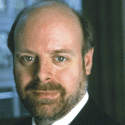 How many times have you heard it from a company leader? “Our greatest asset is our people.”
How many times have you heard it from a company leader? “Our greatest asset is our people.”
As with most clichés, the aphorism is true. Except when it isn’t.
I’m not talking about the minority of corporations that possess such extraordinary physical assets—money, oil, property—that the holding trumps the value of their people. Google’s algorithms might well have greater value than its coders. Ditto Coca Cola’s recipe. But those fall under the category of exceptions proving the rule.
Rather, I’m alluding to those organizations that fail to incent, align, inspire, and empower their workforces. For Enron and Lehman, people were arguably their greatest liability.
Few HRO Today readers need to be told this. They’ve already internalized the reality.
They are fluent in the language of human capital asset management, because they live it everyday. Though sitting at the table of corporate leadership, they are charged with maintaining the most sophisticated understanding of the rank and file. Like Henry V walking among his soldiers on the night before battle, they are wired in to the ground game. They know the realities of a sales rep living in a suitcase, a shop steward challenged by his need to discipline a shoddy worker, a facilities manager bristling because her creative cost management has gone unrecognized. HR officers are custodians of nothing less than an existential foundation of society: the dignity of work.
Yet while HR officers understand that people, properly led, are indeed an organization’s greatest asset, that insight is necessary but not sufficient. Keeping the sensibility energized, refined, and activated is as important as aerobic exercise for the cardiovascular system. Sometimes that means getting out from behind the desk.
Sometimes it even means leaving the office behind altogether.
That’s why HRO Today convenes its annual forum—so that the HR community’s thought leaders can come together, compare notes, elevate their thinking, and sharpen the tools in their toolbox. No book, no webinar, not even a great magazine (I can’t believe I’m writing this) can replace the professional elevation and evolution that can occur at the right confab.
The 2012 HRO Today Forum will be held April 30 through May 2 in Washington, D.C. It will be bigger, more thought provoking, and, frankly, more important than any summit we’ve ever held. We are asking you—the HR leader—to join your peers, other corporate executives, and public policymakers to grapple with one of the most important issues facing our country today: The Job-Skills Gap.
Even in the midst of the most severe economic downturn since the Great Depression, jobs are going unfilled in the United States, because companies can’t find the skilled workers they need. As noted in these pages last month, the ManpowerGroup reports that its poll of U.S. employers found 52 percent declaring that talent shortages are preventing them from filling key positions.
The forum will have plenty of content devoted to the many “O”s of HRO: operational excellence, optimization of the workforce, originality in fostering a culture of innovation. But front and center will be HR officers, bringing their powers and abilities to address a genuine national crisis: the yawning gap that exists between jobs that need filling to keep our workforce competitive in a flatter, faster world and the skills that too few candidates possess to meet those challenges.
When it comes to meeting the qualifications for the task of thought leadership, there is no gap. You’re the ones for the job. Indeed, you can help lay the groundwork now for this vital conversation by emailing me (dirk.olin@sharedxpertise.com) your answer now to this question: Where are you seeing a skills gap among your job applicants?
Speaking of Jobs (note the capital “J”), a couple of months ago, I noted the death of Apple Inc. founder Steve Jobs with a mixture of awe at his brilliance and disapproval of much of his corporate ethos. I noted that new CEO Tim Cook might consider promotion of a more sustainable corporate culture.
On that front, two updates. After promising that Apple would not change under his tenure, Cook was almost immediately reported to be reforming promotion and reporting structures and amping up communications with a workforce that he addresses as “Team.” He also launched the company’s first matching program for employee donations of up to $10,000 to nonprofits. No small change there.
Of equal or greater importance, in January Apple published its first-ever list of company suppliers, addressing issues of both overworked (some to the point of suicide) and underage employees in Chinese factories. The move represents a tectonic shift in the company’s transparency.
That’s my idea of workforce leadership.










